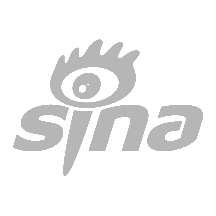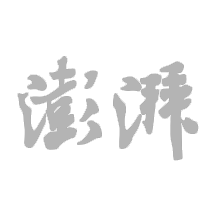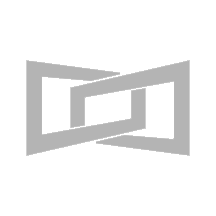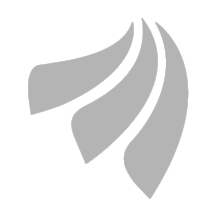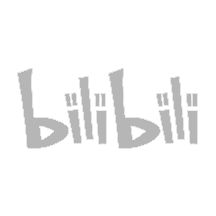北京知产法院发布《侵犯商业秘密民事案件诉讼举证参考》(附中英文全文)
来源 | 北京知识产权法院
编辑 | 祝余 季文梨 布鲁斯
基本情况通报
近日,中共中央、国务院印发的《知识产权强国建设纲要(2021——2035年)》指出,党的十八大以来,在以习近平同志为核心的党中央坚强领导下,我国知识产权事业发展取得显著成效,知识产权法规制度体系逐步完善,其中提到商业秘密保护不断加强。《纲要》进一步要求,要构建门类齐全、结构严密、内外协调的法律体系,其中要求制定修改强化商业秘密保护方面的法律法规。根据我国《民法典》第123条的规定,商业秘密是知识产权的保护客体之一,权利人依法就商业秘密享有专有的权利。作为一种较为特殊的知识产权,商业秘密的认定及权利范围并不像商标权或专利权相对清晰和明确,侵权行为也较为复杂和隐蔽。
实践中,权利人举证难问题一直是侵犯商业秘密民事案件中的突出难点问题。商业秘密自身特点决定了这类案件在客观上存在一定的举证困难,但权利人保存证据意识较弱、举证能力较为有限也是导致举证难、胜诉难的重要原因。尽管在立法层面,已经在《中华人民共和国反不正当竞争法》等法律法规中规定了商业秘密的法定条件、侵犯商业秘密的行为认定、损害赔偿的确定等内容,但权利人在实践中仍存在举证难的情形。为了引导当事人在诉讼中更好地完成举证责任,切实推进“我为群众办实事”实践活动,在一定程度上破解人民群众关心的商业秘密案件举证难问题,我院制定了《北京知识产权法院侵犯商业秘密民事案件诉讼举证参考》。该《举证参考》前期征求了全国律师协会,北京市知识产权保护中心,腾讯、字节跳动、美团、快手、小米、京东等多家科技创新企业的意见,各单位均提出了有益的建议。今天我们专题召开新闻发布会,向各位介绍我院侵犯商业秘密民事案件的审理情况,并发布《北京知识产权法院侵犯商业秘密民事案件诉讼举证参考》。
一、知产法院侵犯商业秘密案件审理的基本情况与特点
自建院至2021年10月,我院共受理侵犯商业秘密纠纷案件163件,其中一审案件136件,二审案件27件。共审结120件,其中一审案件97件,二审案件23件;以判决方式结案的共43件,其中一审案件26件,二审案件17件。其中涉及技术秘密案件26件,涉及经营秘密案件24件,同时涉及技术秘密和经营秘密的案件7件;在以判决方式审结的43件案件中,原告胜诉的案件共17件,占比为40%。经过梳理总结发现,我院审理的侵犯商业秘密民事案件呈现出以下特点:
第一,涉及企业知名度高、案件影响大。商业秘密纠纷通常发生在发展较为迅速的行业领域和竞争较为激烈的商业主体之间。如我院审结的一起涉及自动驾驶领域侵犯技术秘密的民事案件中,王某曾在A公司担任技术副总裁、自动驾驶事业部总经理等职务,王某离职后在与A公司具有直接竞争关系的B公司担任首席执行官。A公司认为王某与B公司侵犯其在自动驾驶领域的技术秘密,故提起诉讼。从我院审理的侵犯商业秘密纠纷民事案件主体来看,涉及的企业包括百度、支付宝、同方威视等知名企业。随着我国数字经济在全球化进程中不断发展,互联网、大数据、云计算、人工智能、区块链等技术加速创新。商业秘密作为保护企业关键核心技术的主要形式,其关系着企业竞争优势、经济利益和行业发展,是企业核心竞争力的重要体现,因此,在此类案件审理中,既要注重依法保护企业核心技术的商业秘密,又要注重在案件审理中合理采取必要的保密措施,防止重点技术领域的企业重要商业秘密在诉讼活动中“二次泄密”。
第二,涉及企业诉员工、前员工的案件较多。从被诉侵权主体的情况来看,我院审结的120件案件中,涉及企业员工、前员工的案件共111件,占比为93%。在以判决方式审结的原告胜诉的17件案件中,被告包括企业员工、前员工的案件共16件,占比为94%。被诉侵犯商业秘密案件中的员工、前员工往往是企业高级管理人员,在企业工作时任职关键岗位,掌握或能够接触到企业的关键商业秘密信息,因其离职或跳槽所引发的侵犯商业秘密案件较多。如我院二审审结的一起多名员工携商业秘密跳槽案件,金某等三人系甲公司员工,分别担任公司球场部经理、大客户部经理等职务,先后从甲公司辞职后入职乙公司,未经许可将甲公司高尔夫球场合作信息、银行客户名单、合作底价等商业秘密披露给乙公司使用。最终我院认定该多名员工与乙公司共同实施了侵犯甲公司商业秘密的行为,判令其停止侵权,并赔偿经济损失和合理开支共计799万元。在这类案件审理中,既要注重保护商业秘密,也需厘清商业秘密的保护范围,避免商业秘密范围不适当扩大,从而损害正常的市场竞争、信息流通和人才合理流动。因此,企业商业秘密保护与员工、前员工合法权益保护的利益平衡是此类案件审理的重点。
第三,原告败诉案件的主要原因在于权利人举证不充分。在以判决方式审结的43件案件中,原告败诉的案件为26件,占比为60%。在原告败诉的26件案件中,法院认定涉案信息不符合商业秘密的法定条件的为19件,占比为73%,认定虽符合商业秘密的法定条件但被告不构成侵权的为7件,占比为27%。在原告败诉的26件案件中,有的案件中原告提交的证据不足以证明涉案信息符合商业秘密的法定条件,原告对于商业秘密所涉技术信息或经营信息的范围、商业秘密的具体载体形式的举证不充分;有的案件中原告不能举证证明被告存在侵权行为,这虽与侵犯商业秘密行为的隐蔽性、复杂性相关,但也凸显商业秘密权利人举证难的问题,举证难是导致原告败诉的主要原因。在权利人自身举证难的情况下,可以通过申请法院采取证据保全措施、签发调查令等方式积极举证。如在我院一审审结的一起披露石油勘探领域技术秘密案件中,我院根据原告A公司的申请,前往被告B公司办公场所进行证据保全,对部分笔记本电脑中的《地质微生物勘探野外采集技术规程》等文件及数据予以复制,并对相关纸质文件进行保全。最终根据保全证据的部分内容认定B公司侵犯A公司的技术秘密,并判令承担相应民事责任。
二、《举证参考》制定过程中的考虑因素
《举证参考》聚焦商业秘密权利人举证难问题,深入贯彻为民办实事、为民解难题,适应北京国际科技创新中心建设、首都高新技术企业发展、依法平等保护中外当事人的合法权益和我院司法审判实践的需求,具体有以下三个方面的考虑:
一是坚持问题导向。作为“我为群众办实事”实践活动的重要内容,《举证参考》坚持以人民为中心,从当事人举证的角度出发,积极引导和帮助当事人在侵犯商业秘密民事案件中有效举证,有效破解侵犯商业秘密民事案件举证难问题,有力推动解决人民群众身边难事急事,让人民群众切身感受到队伍教育整顿和党史学习教育活动的成效。
二是严格依法制定。严格执行《中华人民共和国反不正当竞争法》《最高人民法院关于审理侵犯商业秘密民事案件适用法律若干问题的规定》等法律和司法解释,并参考《北京市高级人民法院知识产权民事诉讼证据规则指引》等相关规定,紧密结合北京知识产权法院的审判实际和侵犯商业秘密民事案件存在的主要问题,注重相关制度的配套衔接,形成保护合力。
三是统筹全流程保护。聚焦商业秘密保护中的主要问题,以现行法律法规为基础,总结归纳涉及商业秘密保护全流程的规定,从四个部分十一个方面对侵犯商业秘密民事案件中关于权利基础、侵权行为、请求承担民事责任、程序事项的举证参考等多个方面作出详细规定,全方位全流程加强对商业秘密的保护。
三、《举证参考》的内容介绍
第一部分关于权利基础的举证参考。商业秘密是指不为公众所知悉、具有商业价值并经权利人采取相应保密措施的技术信息、经营信息等商业信息。该部分对侵犯商业秘密民事案件中可以提起诉讼的主体、商业秘密的法定条件、法定条件的抗辩事由等作出详细规定。重点围绕商业秘密的法定条件提供了详细全面的举证参考,包括秘密性(即不为公众所知悉)、保密性(即采取相应保密措施)、价值性(即具有商业价值)等法定条件。
第二部分关于侵权行为的举证参考。该部分对侵犯商业秘密民事案件中的侵权行为的表现形式、侵权行为的抗辩事由等进行详细规定。重点列举实践中较为常见的侵权行为表现形式。针对司法实践中员工、前员工参与侵犯商业秘密行为较多的情况,列明员工、前员工的范围,引导原告就员工、前员工的侵权行为进行有效举证。同时,为被告提出侵权抗辩提供举证参考,被告可以提供合法授权、自行开发研制、反向工程等证据进行抗辩。
第三部分关于请求承担民事责任的举证参考。该部分对侵犯商业秘密民事案件中的停止侵权、赔偿损失、惩罚性赔偿等民事法律责任承担方式作出详细规定。重点对损害赔偿作出详细规定,根据法律与司法解释的相关规定,指引权利人按照原告损失、被告获利、许可使用费合理倍数、法定赔偿等进行举证。根据惩罚性赔偿制度的相关规定,详细列明恶意侵权行为、侵权行为情节严重等情形的举证参考,进一步加大对侵犯商业秘密行为的规制力度。
第四部分关于程序事项的举证参考。该部分对侵犯商业秘密民事案件中的保全、调查令、诉讼中保密措施、刑民交叉等程序性事项作了详细规定。重点对现有的证据保全、行为保全及财产保全等制度进行归纳梳理。同时就调查令的申请、使用等作出全面规定以便于当事人按规定申请调查取证。同时,商业秘密民事案件审理中如何防止二次泄密一直是难点之一,也是导致权利人不敢、不愿提交关键证据的主要原因。为防止“二次泄密”,举证参考引导当事人在证据保全、证据交换、举证质证、庭审等诉讼活动中申请法院采取必要的保密措施。
侵犯商业秘密纠纷民事案件典型案例
案例一:涉自动驾驶领域侵犯技术秘密纠纷案
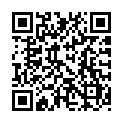
(2017)京73民初2000号
王某曾在A公司担任技术副总裁、自动驾驶事业部总经理等职务。双方签订的劳动合同中约定,未经A公司授权,不得以任何形式、方式,向任何第三人披露任何王某任职期间接触到的商业秘密。合同期满后,王某离职并在B公司担任首席执行官。B公司自成立以来,一直在中国市场进行业务开拓,在自动驾驶领域与A公司具有直接竞争关系。A公司认为王某与B公司侵犯其在自动驾驶领域的技术秘密,故诉至北京知识产权法院。经过多次谈话、开庭、勘验等程序,最终A公司撤回起诉。
案例二:涉高尔夫球场侵犯经营秘密纠纷案
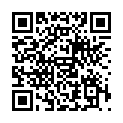
(2018)京73民终686号
原告甲公司系国内高尔夫球服务经营商,为国内金融机构的 VIP客户提供高尔夫增值服务,其与高尔夫球场签订的约定有保密条款的协议中的合作信息,其与银行签订的协议中的合作信息,均构成商业秘密。
被告金某等三人系甲公司员工,分别担任公司球场部经理、大客户部经理等职务,于2012年至2013年先后从甲公司辞职后入职乙公司,三人未经许可将甲公司商业秘密披露给乙公司使用。乙公司在2013年之前与银行等金融机构在高尔夫服务方面的合作很少,金某等3人入职公司后不久,乙公司即参与多家银行高尔夫服务项目投标并顺利中标,其高尔夫服务业务收入获得突飞猛进增长,侵权获利数额巨大。
在此过程中,乙公司明知金某3人等非法披露原告甲公司与银行合作形成的商业秘密,仍在经营中积极利用该商业秘密谋取利益。故北京知识产权法院认定乙公司及金某等3人实施的涉案行为侵犯了甲公司与相关银行合作中形成的商业秘密,并判令乙公司及金某等3人停止侵权,并赔偿经济损失和合理开支共计799万元。
案例三:涉石油微生物勘探技术领域证据保全侵犯技术秘密纠纷案
[(2017)京73民初1382号]
原告A公司系油气勘探开发技术服务商,为石油公司发现油气藏、提高钻井成功率和油气藏开发提供解决方案。其在本案中主张石油微生物勘探技术领域部分信息构成技术秘密。
根据A公司的申请,北京知识产权法院于2017年10月16日前往B公司办公场所进行证据保全,对部分笔记本电脑内数据进行复制,并对纸质文件《地质微生物勘探野外采集技术规程》等进行保全。北京知识产权法院认定包括上述保全的《地质微生物勘探野外采集技术规程》文件在内的多项信息侵犯了A公司的技术秘密,最终判令B公司等停止侵权,并赔偿经济损失和合理开支共计75万元。
《北京知识产权法院侵犯商业秘密民事案件诉讼举证参考》主要内容介绍
第一部分 关于权利基础的举证参考
第一部分共10条,涉及法定条件的抗辩事由、商业秘密的法定条件、法定条件的抗辩事由等三个方面的问题。
通过对近年来涉商业秘密侵权民事案件进行梳理,不难发现,这类案件呈现出低胜诉率的态势。翻阅相关判决,“原告无法提供证据证明”“原告关于被告实施被诉侵权行为的主张证据不足,本院不予支持”的表述比较常见。可见,商业秘密的权利人或者利害关系人在民事诉讼中,往往面临着举证难的困境,其合法权益往往因举证不能而无法得到保障。
究其原因,除了商业秘密自身的特殊性使得这类案件在客观上存在一定的举证困难以外,更值得引起注意的是部分权利人缺乏商业秘密保护方面的法律知识,欠缺主动保护商业秘密的意识,往往不注意对商业秘密受侵害证据的采集和保存。多种因素组合在一起,使得当事人取证不及时、举证不充分、证据关联性差等情况时有发生。为了引导各方当事人更加有效地进行举证,在《举证参考》的第一部分,我们从权利基础方面进一步明确了原被告双方的举证责任。
“关于权利基础的举证参考”作为《举证参考》的第一部分内容,一共有10条。对侵犯商业秘密民事案件中可以依法起诉的主体、商业秘密的法定条件、法定条件的抗辩事由等作出了详细规定。在这一部分,首先对商业秘密下了一个定义,之后的举证责任分配都围绕着这个定义进行。接下来,关于权利基础的举证参考又细分为三个部分。
第一,可以依法起诉的主体。这一部分详细说明了谁可以提起商业秘密侵权之诉。商业秘密的权利人或利害关系人,签订商业秘密独占、排他、普通使用许可合同的被许可人依据相关规定可以单独或共同提起诉讼。
第二,商业秘密的法定条件。这一部分是整个权利基础的重点,为原告举证提供了全面而详细的参考。原告主张其商业秘密被侵犯的,可以举证证明如下事实:(1)该商业秘密不为公众所知悉,即具有秘密性。其中,原告将为公众所知悉的信息进行整理、改进、加工后形成的新信息在被诉侵权行为发生时不为所属领域的相关人员普遍知悉和容易获得的,也属于不为公众所知悉。(2)原告对商业秘密采取了相应的保密措施,即具有保密性。权利人所采取的保密措施所需达到的程度为“合理”即可,并不要求权利人在保密措施的制定和实施中没有疏漏,万无一失。《举证参考》明确了判断何为“与商业秘密相适应的合理保密措施”的考量因素,并对保密措施的种类进行了列举式的细化。(3)原告主张的商业秘密具有商业价值,即具有价值型。商业价值是商业秘密应该受到保护的基础所在。对商业秘密中的技术信息而言,使用后可以有效提高产品性能和质量、降低生产成本或提高环保标准,即可以确定其价值性。而对于商业秘密中的经营信息而言,价值性的证明相对而言会更为困难。《举证参考》明确了原告可以根据商业秘密的研究开发成本等因素,举证证明其具有商业价值,并规定了原告也可以证明其在生产经营活动中形成的阶段性成果具有商业价值。
通过上面的说明,相信大家已经对原告可以围绕哪些方面举证有所了解,但是企业在商业秘密侵权民事诉讼中也可能成为被告,作为被控侵权方,从哪些方面抗辩才能充分地保障自己的权利呢,我们一起来看第三点。
第三,法定条件的抗辩事由。与原告的举证责任相对应的,被告主张商业秘密不符合法定条件的,也可以从商业秘密在被诉侵权行为发生时已为公众所知悉,原告未采取相应保密措施,商业秘密不具有商业价值及其他不符合法定条件的情形等方面举证。具体来说,被告主张原告商业秘密已为公众所知悉的,可以从多角度证明所属领域的相关人员从公开渠道可以获得原告的商业秘密。被告主张原告商业秘密未采取相应保密措施的,也可以从保密措施的可识别程度等多方面举证抗辩。
以上就是第一部分“关于权利基础的举证参考”的主要内容。司法实务中,商业秘密举证方面仍存在着的大量问题,希望相关权利主体进一步提高维权意识,注意收集和保护相关证据,用好《举证参考》,更好地完成举证责任,维护自身的合法权益。
第二、三部分 关于侵权行为、承担民事责任的举证参考
第二部分共12条,涉及“侵权行为的表现形式”及“侵权行为的抗辩事由”两个方面的问题。
其中,“侵权行为的表现形式”为第11条至第19条。第11条、13条、14条、17条以列举的方式,围绕着“不正当获取商业秘密”“非法使用非法获取的商业秘密”“非法使用合法获取的商业秘密”“教唆、引诱、帮助他人侵犯商业秘密”这几种侵权行为应当如何举证做出了规定。第12条进一步明确了可通过对被告获取商业秘密的方式违反法律规定或者商业道德举证来证明其“以其他不正当手段”获取原告的商业秘密。第15条、第19条则是关于侵权行为主体的举证参考。
特别需要说明的是,在2019年《反不正当竞争法》修改之前,员工、前员工能否作为侵犯商业秘密的法律主体,一直存在争议。反法修改后,新增的第九条第二款扩大了侵权主体的范围,从立法层面对员工、前员工是否可以作为第九条的调整对象作出明确表态。同时,第九条第三款“第三人恶意获取、使用或披露商业秘密”同样也涉及员工、前员工。有鉴于此,《举证参考》第15条专门就原告应如何举证证明被告为其员工或前员工、其是否有渠道或者机会获取原告商业秘密给出了参考。即,原告可以举证证明被告为其经营、管理人员以及具有劳动关系的其他人员,并可以从被告所任职务、所负职责及所享有的权限是否与涉案商业秘密相关、承担的本职工作或者单位分配的任务是否与涉案商业秘密相关、是否参与了和商业秘密相关的生产经营活动、是否曾保管、使用、存储、复制、控制或者以其他方式接触、获取商业秘密及其载体等几个方面举证证明其有渠道或者机会获取原告商业秘密。
商业秘密案件中,被诉侵权信息与原告商业秘密是否构成实质上相同,也是举证难点之一。针对这个问题,《举证参考》第16条对举证方向如被诉侵权信息与商业秘密的异同程度、所属领域的相关人员是否容易想到二者的区别、二者用途、使用方式、目的、效果等是否具有实质性差异、公有领域的相关情况等给出了参考,并通过列举的方式进一步明确了哪些证据可以证明被诉侵权信息与原告商业秘密构成实质上相同。第18条则就原告应如何提供初步证据合理表明商业秘密被侵犯从而使得“举证责任转移”作出了规定。
“侵权行为的抗辩事由”包括第20条至第22条,第20条明确了被告可以从被诉侵权信息与原告商业秘密不构成实质相同、商业秘密具有合法来源等方面进行举证。第21条、第22条以列举的方式分别对“合法来源”中关注度较高的“反向工程”及“个人信赖”应当如何证明给出了进一步的参考。
第三部分“关于请求承担民事责任的举证参考”共12条,涉及“停止侵权”及“赔偿损失”两个方面的问题。
其中,第22条、第23条为“停止侵权”相关,第24条至第34条为“赔偿损失”相关。司法实践中,侵权损害赔偿额的确定是侵犯商业秘密案件中的重点和难点问题,故《举证参考》就此部分作出了较为详细的规定。第25条明确了赔偿计算方法的种类及适用顺序,第26条至第30条针对具体应如何证明赔偿数额给出了参考。同时,就能够显著加大商业秘密司法保护力度的惩罚性赔偿应当如何举证,第31条至第34条予以进一步的细化。分别就惩罚性赔偿适用的提出、惩罚性赔偿适用要件即“恶意”及“情节严重”的认定、惩罚性赔偿计算基数的举证给出了参考。
第四部分 关于程序事项的举证参考
第四部分共24条,涉及保全、调查令、诉讼中的保密措施、刑民交叉等四个方面的问题。
保全分为证据保全、财产保全、行为保全。所谓证据保全,是指在证据可能灭失或者以后难以取得的情况下,申请人可以向法院申请保全相关证据。所谓财产保全,是指因被申请人的行为或者其他原因,可能使判决难以执行或者造成申请人其他损害的,可以申请保全被申请人的财产。所谓行为保全,是指因被申请人的行为或者其他原因,可能使判决难以执行或者造成申请人的合法权益受到难以弥补的损害的,可以申请法院责令被申请人作出一定行为或者禁止其作出一定行为,实践中常见的是责令停止侵权行为。证据保全、财产保全、行为保全可以在诉讼过程中申请,情况紧急的,也可以在提起诉讼前申请。申请财产保全和行为保全应当依法提供担保。《举证参考》第39条和第40条分别对“情况紧急”和“难以弥补的损害”应当如何证明给出参考。同时,为平衡申请人与被申请人的利益,准确作出和实施保全裁定,《举证参考》第43条规定,申请证据保全或行为保全的,申请人应当在提出保全申请后、保全裁定作出前明确商业秘密的具体内容,同时可以提供载有商业秘密的合同、文档、计算机软件、产品、招投标文件、数据库文件等证据加以证明。
司法实践中,当事人及其诉讼代理人因客观原因无法自行收集证据的,可以申请法院调查收集证据,也可以请求法院颁发调查令,由当事人的诉讼代理人代为调查收集证据。《举证参考》第47条至第51条对调查令的申请和使用给出了参考和指引。如代为调查收集证据的诉讼代理人应为执业律师,被调查收集的证据不涉及国家秘密、商业秘密、个人隐私,也不存在其他不宜由诉讼代理人代为调查收集的情形。持有调查令的律师于调查令有效期内,按照调查令载明的证据名称或范围向被调查人调查收集证据,同时出示律师执业证书原件供被调查人核对。被调查人提供的证据在持有调查令的律师和被调查人的共同见证下封存,并通过适当方式及时、完整的提交法院。
涉及商业秘密的案件,可以申请不公开审理,也可以申请法院在互联网公布裁判文书时删除涉及商业秘密的信息。为避免在案件审理过程中发生商业秘密的泄露,《举证参考》第53条特别规定了当事人可以就其所提交的涉及商业秘密的证据或者其他需要保密的商业信息,申请法院在证据保全、证据交换、举证质证、委托鉴定、询问、开庭等诉讼活动中采取必要的保密措施,具体包括:(1)针对不同诉讼环节,申请对接触涉密证据的人员范围作出限制;(2)要求接触涉密证据的当事人签订保密承诺书;(3)申请对涉密证据不予交换,仅通过当庭出示的方式由对方当事人发表质证意见;(4)对于证据中需要保密的部分进行不影响案件审理的遮挡;(5)申请采取其他必要的保密措施。尤其是,上述保密措施并非仅原告可以申请,被告提交的相关证据材料涉及需要保密事项的,亦可提出申请。接触涉密证据的当事人,不得出于诉讼之外的任何目的披露、使用、允许他人使用在诉讼程序中接触到的秘密信息。否则,将会承担相应的法律责任。
根据刑法的规定,侵犯商业秘密给商业秘密的权利人造成重大损失的可以入刑。《举证参考》的最后一部分对刑民交叉的问题给出相关指引。实践中,对于由公安机关、检察机关或者法院保存的与被诉侵权行为具有关联性的证据,侵犯商业秘密民事案件的当事人因客观原因不能自行收集的,可以向法院申请调查收集上述证据,但不能影响正在进行的刑事诉讼程序。涉及同一侵犯商业秘密行为的刑事案件尚未审结的,当事人也可以请求法院中止审理侵犯商业秘密民事案件,但是否中止审理,由民事案件的审理法院根据案件具体情况确定。当事人还可以主张依据生效刑事裁判认定的实际损失或者违法所得确定针对同一侵犯商业秘密行为提起的民事诉讼的赔偿数额。
北京知识产权法院侵犯商业秘密民事案件诉讼举证参考
为有效破解侵犯商业秘密民事案件举证难问题,引导当事人更好地完成举证责任,维护科技创新企业的核心竞争力,依法平等保护中外当事人的合法权益,优化法治化营商环境,根据《中华人民共和国反不正当竞争法》《最高人民法院关于审理不正当竞争民事案件应用法律若干问题的解释》《最高人民法院关于审理侵犯商业秘密民事案件适用法律若干问题的规定》《最高人民法院关于知识产权民事诉讼证据的若干规定》《最高人民法院关于审理侵害知识产权民事案件适用惩罚性赔偿的解释》,以及《北京市高级人民法院知识产权民事诉讼证据规则指引》等相关规定,结合侵犯商业秘密民事案件审理中的主要问题,特制定本举证参考。
第一部分 关于权利基础的举证参考
商业秘密通常是指不为公众所知悉、具有商业价值并经权利人采取相应保密措施的技术信息、经营信息等商业信息。
技术信息主要包括与技术有关的结构、原料、组分、配方、材料、样品、样式、植物新品种繁殖材料、工艺、方法或其步骤、算法、数据、计算机程序及其有关文档等信息。
经营信息主要包括与经营活动有关的创意、管理、销售、财务、计划、样本、招投标材料、客户信息、数据等信息。客户信息,包括客户的名称、地址、联系方式以及交易习惯、意向、内容等信息。
一、可以依法起诉的主体
1.原告能够举证证明其为商业秘密的权利人或者利害关系人,可以依法提起侵犯商业秘密诉讼。
2.商业秘密独占使用许可合同的被许可人可以单独提起侵犯商业秘密诉讼;
商业秘密排他使用许可合同的被许可人可以和权利人共同提起侵犯商业秘密诉讼,或者在权利人不起诉的情况下自行提起诉讼;
商业秘密普通使用许可合同的被许可人可以和权利人共同提起侵犯商业秘密诉讼,或者经权利人书面授权单独提起诉讼。
二、商业秘密的法定条件
3.原告能够举证证明商业秘密在被诉侵权行为发生时不为所属领域的相关人员普遍知悉和容易获得的,可以主张该商业秘密不为公众所知悉。
4.原告能够举证证明将为公众所知悉的信息进行整理、改进、加工后形成的新信息在被诉侵权行为发生时不为所属领域的相关人员普遍知悉和容易获得的,可以主张该新信息构成商业秘密。为证明该新信息非公众所知悉,原告可以将整理、改进、加工的过程和记录等作为证据提交。
5.原告主张对商业秘密采取了相应保密措施,可以根据商业秘密及其载体的性质、商业秘密的商业价值、保密措施的可识别程度、保密措施与商业秘密的对应程度以及原告保密意愿等因素,举证证明其为防止商业秘密泄露,在被诉侵权行为发生以前采取了与商业秘密相适应的合理保密措施。
6.原告主张采取了相应保密措施,可以举证证明存在以下事实:
(1)签订保密协议或者在合同中约定保密义务的;
(2)通过章程、培训、规章制度、书面告知等方式,对能够接触、获取商业秘密的员工、前员工、供应商、客户、来访者等提出保密要求的;
(3)对涉密的厂房、车间等生产经营场所限制来访者或者进行区分管理的;
(4)以标记、分类、隔离、加密、封存、限制能够接触或者获取的人员范围和权限等方式,对商业秘密及其载体进行区分和管理的;
(5)对能够接触、获取商业秘密的计算机设备、电子设备、网络设备、存储设备、软件等,采取禁止或者限制使用、访问、存储、复制等措施的;
(6)要求离职员工登记、返还、清除、销毁其接触或者获取的商业秘密及其载体,继续承担保密义务的;
(7)采取其他合理保密措施的。
7.原告主张商业秘密具有商业价值的,可以根据商业秘密的研究开发成本、实施该项商业秘密的收益、可得利益、可保持竞争优势的时间等因素,举证证明商业秘密因不为公众所知悉而具有现实的或者潜在的商业价值。生产经营活动中形成的阶段性成果符合上述规定的,原告可以主张该阶段性成果具有商业价值。
三、法定条件的抗辩事由
8.被告主张原告商业秘密不符合商业秘密法定条件的,可以举证证明存在以下事实:
(1)商业秘密在被诉侵权行为发生时已为公众所知悉;
(2)原告未采取相应保密措施;
(3)商业秘密不具有商业价值;
(4)商业秘密不符合法定条件的其他情形。
9.被告主张原告商业秘密已为公众所知悉的,可以举证证明存在以下事实:
(1)原告商业秘密在所属领域属于一般常识或者行业惯例的;
(2)原告商业秘密仅涉及产品的尺寸、结构、材料、部件的简单组合等内容,所属领域的相关人员通过观察上市产品即可直接获得的;
(3)原告商业秘密已经在公开出版物或者其他媒体上公开披露的,包括文献资料、宣传材料、网页等;
(4)原告商业秘密已通过公开的报告会、展览等方式公开的;
(5)所属领域的相关人员从其他公开渠道可以获得原告商业秘密的。
10.被告主张原告商业秘密未采取相应保密措施的,可以通过保密措施的可识别程度、保密措施与商业秘密价值相对应程度、所涉信息载体的特性、他人通过正当方式获得的难易程度等方面进行举证。
第二部分 关于侵权行为的举证参考
四、侵权行为的表现形式
11.原告主张被告实施了侵犯商业秘密的行为,可以举证证明存在以下事实:
(1)以盗窃、贿赂、欺诈、胁迫、电子侵入或者其他不正当手段获取原告的商业秘密;
(2)披露、使用或者允许他人使用以前项手段获取的原告的商业秘密;
(3)违反保密义务或者违反原告有关保守商业秘密的要求,披露、使用或者允许他人使用其所掌握的商业秘密;
(4)教唆、引诱、帮助他人违反保密义务或者违反原告有关保守商业秘密的要求,获取、披露、使用或者允许他人使用原告的商业秘密。
12.原告主张被告的行为属于以其他不正当手段获取权利人的商业秘密的,可举证证明被告获取商业秘密的方式违反法律规定或者商业道德。
13.原告主张被告实施了侵犯商业秘密的具体行为,可以提供以下证据:
(1)被告生产的含有原告商业秘密的产品、产品手册、宣传材料、计算机软件、文档;
(2)被告与第三方订立的含有原告商业秘密的合同;
(3)被告所用被诉侵权信息与原告商业秘密相同或实质上相同的鉴定报告、评估意见、勘验结论;
(4)被告与披露、使用或允许他人使用商业秘密的主体存在合同关系或其他关系的材料;
(5)针对原告商业秘密的密钥、限制访问系统或物理保密装置等被破解、规避的记录;
(6)能反映原告商业秘密被窃取、披露、使用的证人证言;
(7)包含原告商业秘密的产品说明书、宣传介绍资料;
(8)被告明知或应知他人侵犯商业秘密仍提供帮助的相关材料;
(9)被告教唆、引诱、帮助他人侵犯商业秘密的录音录像、聊天记录、邮件;
(10)可以证明被告实施侵犯商业秘密行为的其他证据。
14.原告主张被告违反保密义务的,可以举证证明根据法律规定或者合同约定等被告应承担保密义务。若未在合同中约定保密义务,可以举证证明根据诚信原则以及合同的性质、目的、缔约过程、交易习惯等,被告知道或者应当知道其获取的信息属于原告的商业秘密。
15.原告主张被告为员工、前员工的,可以举证证明被告为其经营、管理人员以及具有劳动关系的其他人员。原告主张员工、前员工有渠道或者机会获取原告商业秘密的,可以举证证明存在以下事实:
(1)职务、职责及权限与涉案商业秘密相关;
(2)承担的本职工作或者单位分配的任务与涉案商业秘密相关;
(3)参与和商业秘密相关的生产经营活动;
(4)曾保管、使用、存储、复制、控制或者以其他方式接触、获取商业秘密及其载体;
(5)有渠道或者机会获取商业秘密的其他事实。
16.原告主张被诉侵权信息与其商业秘密构成实质上相同,可以围绕被诉侵权信息与商业秘密的异同程度、所属领域的相关人员在被诉侵权行为发生时是否容易想到被诉侵权信息与商业秘密的区别、被诉侵权信息与商业秘密的用途、使用方式、目的、效果等是否具有实质性差异、公有领域中与商业秘密相关信息的情况等因素进行举证,具体可以提供以下证据:
(1)有资质的鉴定机关、评估机构出具的鉴定意见、评估意见,相关专家辅助人意见;
(2)能体现与原告商业秘密实质上相同的信息的产品、合同、意向书;
(3)前述证据来自于与被告有关的第三方;
(4)可以证明被诉侵权信息与原告商业秘密构成实质上相同的其他证据。
17.原告主张被告使用商业秘密的,可举证证明存在以下事实:
(1)被告在生产经营活动中直接使用商业秘密;
(2)被告对商业秘密进行修改、改进后使用;
(3)被告根据商业秘密调整、优化、改进有关生产经营活动。
18.原告提供初步证据合理表明商业秘密被侵犯,且提供以下证据之一的,被告应当证明其不存在侵犯商业秘密的行为:
(1)有证据表明被告有渠道或者机会获取商业秘密,且其使用的被诉侵权信息与该商业秘密实质上相同;
(2)有证据表明商业秘密已经被被告披露、使用或者有被披露、使用的风险;
(3)有其他证据表明商业秘密被被告侵犯。
19.原告能够举证证明经营者以外的其他自然人、法人和非法人组织侵犯其商业秘密的,可以依据相关规定提起诉讼并主张侵权人承担的民事责任。
五、侵权行为的抗辩事由
20.被告否认侵犯商业秘密的,可以提供以下证据:
(1)有资质的鉴定机关、评估机构出具的被诉侵权信息与原告商业秘密不同的鉴定意见、评估报告、勘验结论;
(2)被告获取、披露、使用或者允许他人使用的商业秘密经过合法授权的授权书、合同;
(3)被告自行开发研制或者反向工程等的开发文件、研发记录、音视频文件;
(4)客户基于对离职员工个人的信赖而自愿与该个人或者其新单位进行市场交易的说明、证人证言;
(5)其他证据。
21.被告主张被诉侵权信息系通过反向工程获取的,可以提供以下证据:
(1)通过公开渠道取得产品的购买合同、接受赠予的凭证、票据;
(2)通过拆卸、测绘、分析等相关技术手段从公开渠道取得的产品中获得有关技术信息的工作记录、视频、文档数据;
(3)委托他人通过拆卸、测绘、分析等技术手段从公开渠道取得的产品中获得有关技术信息的合同、往来邮件;
(4)能够证明被诉侵权信息系通过反向工程获取的其他证据。
22.被告主张被诉侵权信息系基于个人信赖获取的,可以提供以下证据:
(1)所涉行业领域强调个人技能的行业特点说明;
(2)客户明确其系基于对员工个人的信赖自愿选择交易的声明、说明或者聊天记录、往来邮件;
(3)与相关客户的交易未利用原告所提供的物质条件、交易平台的文件、沟通记录;
(4)能够证明被诉侵权信息系基于个人信赖获取的其他证据。
第三部分 关于请求承担民事责任的举证参考
六、停止侵权
23.对于侵犯商业秘密行为判决停止侵害的民事责任,停止侵害的时间一般持续到该商业秘密已为公众所知悉时为止。原告能够举证证明依照上述规定判决停止侵害的时间明显不合理的,可以请求法院在依法保护原告的商业秘密竞争优势的情况下,判决被告在一定期限或者范围内停止使用该商业秘密。
24.原告可以请求法院判决被告返还或者销毁商业秘密载体,清除其控制的被诉侵权信息。
七、赔偿损失
25.原告能够举证证明其因被侵权所受到的实际损失的,可以请求法院按照其实际损失确定赔偿数额;实际损失难以确定的,原告能够举证证明被告因侵权所获得的利益的,可以请求法院按照被告因侵权所获得的利益确定赔偿数额;原告的损失或者被告获得的利益难以确定的,原告可以请求法院参照商业秘密许可使用费的倍数合理确定。对故意侵犯商业秘密,情节严重的,原告可以请求法院在按照上述方法确定数额的一倍以上五倍以下确定赔偿数额。赔偿数额包括原告为制止侵权行为所支付的合理开支。
26.原告请求参照商业秘密许可使用费确定因被侵权所受到的实际损失的,可以举证证明许可的性质、内容、实际履行情况以及侵权行为的性质、情节、后果等事实。
27.原告因被侵权所受到的实际损失、被告因侵权所获得的利益、商业秘密许可使用费难以确定的,原告可以请求法院根据侵权行为的情节判决给予五百万元以下的赔偿。
28.原告请求法院根据侵权行为的情节判决给予五百万元以下的赔偿的,可以举证证明商业秘密的性质、商业价值、研究开发成本、创新程度、能带来的竞争优势以及被告的主观过错、侵权行为的性质、情节、后果等事实。
29.原告已经提供被告因侵权所获得的利益的初步证据,但与侵犯商业秘密行为相关的账簿、资料由被告掌握的,原告可以请求法院责令被告提供该账簿、资料。被告无正当理由拒不提供或者不如实提供的,原告可以请求法院根据其主张和提供的证据认定被告因侵权所获得的利益。
30.原告举证证明因侵权行为导致商业秘密为公众所知悉的,可以请求法院在依法确定赔偿数额时,考虑商业秘密的商业价值。
31.原告主张被告恶意侵犯其商业秘密且情节严重,请求惩罚性赔偿的,应当在起诉时明确赔偿数额、计算方式以及所依据的事实和理由。
32.原告主张被告具有侵犯商业秘密的恶意,可以围绕以下事实提供证据:
(1)被告经原告或者利害关系人通知、警告后,仍继续实施侵权行为的;
(2)被告或其法定代表人、管理人是原告或者利害关系人的法定代表人、管理人、实际控制人的;
(3)被告与原告或者利害关系人之间存在劳动、劳务、合作、许可、经销、代理、代表等关系,且接触过被侵犯的商业秘密的;
(4)被告与原告或者利害关系人之间有业务往来或者为达成合同等进行过磋商,且接触过被侵犯的商业秘密的;
(5)其他可以认定为故意的情形。
33.原告主张被告侵犯商业秘密行为情节严重的,可以围绕以下事实提供证据:
(1)因侵犯商业秘密行为被行政处罚或者法院裁判承担责任后,再次实施相同或者类似侵权行为;
(2)以侵犯商业秘密为业;
(3)侵权行为持续时间长;
(4)伪造、毁坏或者隐匿侵权证据;
(5)拒不履行保全裁定;
(6)侵权获利或者原告受损巨大;
(7)侵权行为可能危害国家安全、公共利益或者人身健康;
(8)其他可以认定为情节严重的情形。
34.原告主张惩罚性赔偿的,以原告因被侵权所受到的实际损失或者按照侵权人因侵权所获得的利益作为计算基数。该基数不包括原告为制止侵权所支付的合理开支。
第四部分 关于程序事项的举证参考
八、保全
35.在证据可能灭失或者以后难以取得的情况下,申请人可以在诉讼过程中依法向法院申请保全证据。
36.因情况紧急,在证据可能灭失或者以后难以取得的情况下,申请人可以在提起诉讼前依法向法院申请保全证据。
37.被申请人试图或者已经以不正当手段获取、披露、使用或者允许他人使用申请人的商业秘密,可能会使判决难以执行或者造成申请人其他损害,或者将会使申请人的合法权益受到难以弥补的损害的,申请人可以在诉讼过程中依法向法院申请行为保全。
38.因情况紧急,不立即申请保全会使判决难以执行或者造成申请人其他损害,或者将会使申请人的合法权益受到难以弥补的损害的,申请人可以在提起诉讼前依法向法院申请行为保全。
39.申请人申请行为保全并主张“情况紧急”的,可以围绕以下事实提供证据:
(1)申请人的商业秘密即将被非法披露;
(2)诉争的商业秘密即将被非法处分;
(3)申请人的商业秘密在展销会等时效性较强的场合正在或者即将受到侵害;
(4)其他需要立即采取行为保全措施的情况。
40.申请人申请行为保全并主张被申请人的行为会给其造成“难以弥补的损害”的,可以围绕以下事实提供证据:
(1)被申请人的行为将会侵害申请人享有的商誉等权利且造成无法挽回的损害;
(2)被申请人的行为将会导致侵权行为难以控制且显著增加申请人损害;
(3)被申请人的侵害行为将会导致申请人的相关市场份额明显减少;
(4)对申请人造成其他难以弥补的损害。
41.申请人申请行为保全的,应当依法提供担保。申请人提供的担保数额,应当相当于被申请人可能因执行行为保全措施所遭受的损失,包括责令停止侵权行为所涉产品的销售收益、保管费用等合理损失。
42.行为保全措施一般不因被申请人提供担保而解除,但申请人同意的除外。
43.为制止侵犯商业秘密行为,申请人能够在提出保全申请后、保全裁定作出前明确商业秘密的具体内容,同时提供载有商业秘密的合同、文档、计算机软件、产品、招投标文件、数据库文件等证据的,可以申请诉前或诉中证据保全或行为保全。
44.因被申请人的行为或者其他原因,可能使判决难以执行或者造成申请人其他损害的,申请人可以在诉讼过程中依法向法院申请财产保全并提供相应担保。
45.因情况紧急,不立即申请保全会使申请人的合法权益受到难以弥补的损害的,申请人可以在提起诉讼前依法向法院申请财产保全。申请人应当提供相当于请求保全数额的担保。
46.被申请人可以提供充分有效担保,请求解除财产保全。
九、调查令
47.当事人申请调查收集证据,请求法院颁发调查令,由当事人的诉讼代理人代为调查收集证据的,应满足准予调查收集证据申请应具备的条件,且需同时符合以下条件:
(1)申请人的诉讼代理人为执业律师,且持令代为调查收集证据的人仅限于调查令上列明的执业律师;
(2)调查令足以克服当事人及其诉讼代理人不能自行收集证据的客观原因;
(3)被调查收集的证据不涉及国家秘密、商业秘密、个人隐私等且不存在其他不宜由诉讼代理人持调查令收集的情形。
48.持有调查令的律师于调查令有效期内,按照调查令载明的证据名称或范围向被调查人调查收集证据。持有调查令的律师向被调查人调查收集证据时,同时出示其律师执业证书原件供被调查人核对。
49.被调查人对调查令和相关律师身份核对无异后,按照调查令载明的名称或范围提供证据。
50.被调查人提供的证据在持有调查令的律师和被调查人的共同见证下封存,由持有调查令的律师及时、完整的提交法院或由被调查人在合理期间内采用邮寄等方式提交法院。
51.被调查人因故未能提供证据或者拒不协助调查的,持有调查令的律师于调查令有效期届满后三日内向法院书面说明相关情况。
十、诉讼中的保密措施
52.涉及商业秘密的案件,双方当事人可以申请不公开审理。当事人可以申请法院在互联网公布裁判文书时删除涉及商业秘密的信息。
53.双方当事人所提交证据涉及商业秘密或者其他需要保密的商业信息的,当事人可以申请法院在证据保全、证据交换、举证质证、委托鉴定、询问、开庭等诉讼活动中采取必要的保密措施,保密措施包括但不限于以下情形:
(1)针对不同诉讼环节,申请对接触涉密证据的人员范围作出限制;
(2)要求接触涉密证据的当事人签订保密承诺书;
(3)申请对涉密证据不予交换,仅通过当庭出示的方式由对方当事人发表质证意见;
(4)对于证据中需要保密的部分进行不影响案件审理的遮挡;
(5)申请采取其他必要的保密措施。
54.接触前款涉密证据的当事人,不得出于本案诉讼之外的任何目的披露、使用、允许他人使用在诉讼程序中接触到的秘密信息。
55.当事人违反前款所称的保密措施的要求,擅自披露商业秘密或者在诉讼活动之外使用或者允许他人使用在诉讼中接触、获取的商业秘密的,应当依法承担民事责任。构成民事诉讼法第一百一十一条规定情形的,依法采取强制措施。构成犯罪的,依法追究刑事责任。
十一、刑民交叉
56.由公安机关、检察机关或者法院保存的与被诉侵权行为具有关联性的证据,侵犯商业秘密民事案件的当事人因客观原因不能自行收集的,可以向法院申请调查收集上述证据,但可能影响正在进行的刑事诉讼程序的除外。
57.当事人可以主张依据生效刑事裁判认定的实际损失或者违法所得确定针对同一侵犯商业秘密行为提起的民事诉讼的赔偿数额。
58.涉及同一侵犯商业秘密行为的刑事案件尚未审结的,当事人可以请求法院中止审理侵犯商业秘密民事案件。是否中止审理,由民事案件的审理法院根据案件具体情况确定。
Beijing Intellectual Property Court
Reference for Proof in Civil Cases of Infringements of Trade Secrets
This Reference for Proof is aimed at effectively solving the difficulty of proof in civil cases of infringements of trade secrets, guiding the parties concerned to better fulfill the burden of proof, maintaining the core competitiveness of technological innovation enterprises, equally protecting the legitimate rights and interests of Chinese and foreign parties in accordance with the law, and optimizing the legalized business environment. This Reference for Proof is hereby formulated in combination with main issues in the trial of civil cases of infringements of trade secrets and in accordance with the Anti-unfair Competition Law of the People’s Republic of China, the Interpretation of the Supreme People’s Court on Several Issues Concerning the Application of Laws in the Trial of Civil Cases of Unfair Competition, the Provisions of the Supreme People’s Court on Several Issues Concerning the Application of Laws in the Trial of Civil Cases of Infringements of Trade Secrets, the Several Provisions of the Supreme People’s Court on Evidence in Civil Procedures Involving Intellectual Property Rights, the Interpretation of the Supreme People's Court on the Application of Punitive Damages in the Trial of Intellectual Property Infringement Civil Cases, the Guidelines on the Evidence Rules for Intellectual Property Civil Litigation of Beijing High People’s Court and relevant provisions.
Part I Reference for Proof of Rights
Trade secrets usually refer to commercial information including technical information and business information etc. that are not known to the public, have commercial value, and have been processed through corresponding non-disclosure measures by the right holders.
Technical information mainly includes technology-related information, such as structures, raw materials, components, formulas, materials, samples, patterns, propagation materials of new plant varieties, processes, methods or their steps, algorithms, data, computer programs, and related documents.
Business information mainly includes information related to business activities, such as ideas, management, sales, finance, plans, samples, bidding materials, customer information and data. Customer information includes the customer’s name, address, contact information, transaction habits, intentions, content, and other information.
I. The Party that may File a Lawsuit in accordance with the Law
1. The plaintiff may file a trade secret infringement lawsuit in accordance with the law if the said plaintiff can provide evidence to prove that the said plaintiff is the right holder or interested parties of the trade secret.
2. The licensee of a trade secret exclusive license contract can file a trade secret infringement lawsuit independently.
The licensee of a trade secret sole license contract can file a trade secret infringement lawsuit jointly with the right holder, or do so independently if the right holder does not file such a lawsuit.
The licensee of a trade secret non-exclusive license contract may file a trade secret infringement lawsuit jointly with the right holder, or file such a lawsuit independently with written authorization of the right holder.
II. Legal Requirements of Trade Secrets
3. The plaintiff may claim that the trade secret is not known to the public, if the said plaintiff provides evidence to prove that the trade secret shall not be generally known to or easily acquired by relevant personnel in the field when the alleged infringement occurs.
4. If the plaintiff provides evidence to prove that the new information that is sorted, improved, or processed from the information known to the public is not be generally known to or easily acquired by relevant personnel in the field when the alleged infringement occurs, the said plaintiff may claim that the said new information constitutes the trade secret. To prove that the new information is not known to the public, the plaintiff may submit the process, records, etc. of such sorting, improvement, and processing as evidence.
5. If the plaintiff claims to have taken corresponding non-disclosure measures for the trade secret, the said plaintiff may based on factors such as the nature of the trade secret and its carriers, the commercial value of the trade secret, the identifiable degree of the non-disclosure measures, the degree of correspondence between the non-disclosure measures and the trade secret, and the plaintiff’s willingness to keep confidential the trade secret, provide evidence to prove that reasonable non-disclosure measures commensurate with the trade secret have been taken thereby before the alleged infringement occurred in order to prevent the disclosure of the trade secret.
6. If the plaintiff claims to have taken corresponding non-disclosure measures for the trade secret, the said plaintiff can provide evidence to prove the existence of any of the following facts:
(1) A confidentiality agreement has been signed or non-disclosure obligations have been provided for in the agreement;
(2) Confidentiality requirements have been stated by means of articles of association, training, rules and regulations, written notifications, etc. to the employees, former employees, suppliers, customers, visitors, etc. of the plaintiff who can access and acquire the trade secret;
(3) Visitors have been restricted from entering secret-related factories, workshops and other production and business premises or the said production and business premises have been subjected to differentiated management;
(4) The trade secret and its carriers have been distinguished and managed by such means as marking, classifying, isolating, encrypting, sealing, and restricting the scope and authority of persons who can access or acquire the trade secret;
(5) Measures such as prohibiting or restricting the use, access, storage and copying have been taken to computer equipment, electronic equipment, network equipment, storage equipment, software, etc. that can access and acquire the trade secret;
(6) The plaintiff’s former employees have been required to register, return, delete or destroy the trade secret and its carriers that they have accessed or acquired, and to continue to assume their non-disclosure obligations; or
(7) Other reasonable non-disclosure measures that have been taken.
7. If the plaintiff claims that the trade secret has commercial value, the said plaintiff may based on factors such as the cost of research and development of the trade secret, the profits from implementing the trade secret, the profits available from the trade secret, and the time period during which the competitive advantages can be maintained due to the trade secret, provide evidence to prove that the trade secret unknown to the public has real or potential commercial value. If the phased results formed in the production and business activities conform to the above provisions, the plaintiff can claim that the phased results have commercial value.
III. Defense Against Legal Requirements
8. If the defendant claims that the plaintiff’s trade secret does not meet legal requirements of trade secrets, the said defendant can provide evidence to prove the existence of any of the following facts:
(1) The trade secret had been known to the public when the alleged infringement occurred;
(2) The plaintiff has not taken corresponding non-disclosure measures;
(3) The trade secret does not have any commercial value; or
(4) The trade secret is under other circumstances where it does not meet legal requirements.
9. If the defendant claims that the plaintiff’s trade secret has been known to the public, the said defendant can provide evidence to prove the existence of any of the following facts:
(1) The plaintiff’s trade secret belongs to commercial rules or industry practice in the field;
(2) The plaintiff’s trade secret only involves the simple combination of product size, structure, material and component, etc., so that it can be acquired directly by relevant personnel in the field by observing products in the market;
(3) The plaintiff’s trade secret has been publicly disclosed in public publications or other media, including literature, promotional materials, web pages, etc.;
(4) The plaintiff’s trade secret has been disclosed through public reports, exhibitions, etc.; or
(5) The plaintiff’s trade secret can be acquired by relevant personnel in the field from other public channels.
10. If the defendant claims that the plaintiff has not taken corresponding non-disclosure measures for the trade secret thereof, the said defendant can provide evidence from such aspects as the identifiable degree of non-disclosure measures, the degree of correspondence between the non-disclosure measures and the value of the trade secret, the characteristics of the information carriers involved, and the degree of difficulty in acquiring the trade secret through proper means.
Part II Reference for Proof of Infringement
IV. Forms of Infringement
11. If the plaintiff claims that the defendant has committed an infringement of the trade secret thereof, the said plaintiff can provide evidence to prove the existence of any of the following facts:
(1) The defendant acquires the plaintiff’s trade secret by theft, bribery, fraud, coercion, electronic intrusion, or other improper means;
(2) The defendant discloses, uses or allows another person to use the plaintiff’s trade secret acquired by the foregoing means;
(3) The defendant discloses, uses, or allows another person to use the trade secret in violation of the non-disclosure obligations of the said defendant or the plaintiff’s requirements for keeping such trade secret confidential; or
(4) The defendant abets a person, tempts or aids a person into or in acquiring, disclosing, using or allowing another person to use the plaintiff’s trade secret in violation of the non-disclosure obligations thereof or the plaintiff’s requirements for keeping such trade secret confidential.
12. If the plaintiff claims that the defendant acquires the trade secret from the right holder by any other improper means, the said plaintiff can provide evidence to prove that the means by which the defendant acquires the trade secret violates the law or business ethics.
13. If the plaintiff claims that the defendant has committed a specific act of infringing on the trade secret thereof, the said plaintiff can provide any of the following evidence:
(1) Products, product manuals, promotional materials, computer software or documents produced or made by the defendant that contain the plaintiff’s trade secret;
(2) A contract between the defendant and a third party that contains the plaintiff’s trade secret;
(3) The appraisal report, evaluation opinion, or investigation conclusion that presents that the alleged information used by the defendant is the same or substantially the same as the plaintiff’s trade secret;
(4) Materials that present that the defendant has a contractual relationship or other relationship with the entity that discloses, uses, or allows another person to use the trade secret;
(5) Records that the plaintiff’s trade secret keys, restricted access systems, or physical security devices have been cracked or circumvented;
(6) Witness testimony that can show the theft, disclosure, or use of the plaintiff’s trade secret;
(7) Product manuals and promotional materials containing the plaintiff’s trade secret;
(8) Relevant materials that show the defendant still provide another person with help though the said defendant knows or should have known that such another person has infringed on the plaintiff’ trade secret;
(9) Audio and video recordings, chat records, or emails about the defendant’s abetting a person, tempting or aiding a person into or in infringing upon the plaintiff’s trade secret; or
(10) Other evidence that can prove that the defendant has committed an infringement of the trade secret.
14. If the plaintiff claims that the defendant violates the non-disclosure obligation thereof, the said plaintiff may provide evidence to prove that the defendant shall bear such non-disclosure obligation in accordance with the law or contract. If such non-disclosure obligation is not stipulated in the contract, the said plaintiff may provide evidence to prove that the defendant has known or should have known that the information acquired thereby is the plaintiff’s trade secret based on the principle of good faith, the nature and purpose of the contract, the process of contracting, and trading habits.
15. If the plaintiff claims that the defendant is an employee or former employee thereof, the said plaintiff may provide evidence to prove that the defendant is a member of the defendant’s operating, managerial or other personnel with labor relations. If the plaintiff claims that such employee has channels or opportunities to acquire such trade secret, the said plaintiff can provide evidence to prove the existence of any of the following facts:
(1) Such employee’s duties, responsibilities and authorities are related to the involved trade secret;
(2) The work undertaken by or the tasks assigned by the entity to such employee are related to the involved trade secret;
(3) Such employee participates in production and business activities related to the trade secret;
(4) Such employee once kept, used, stored, copied, controlled or otherwise accessed or acquired the involved trade secret and its carriers; or
(5) There are other facts that prove such employee has channels or opportunities to acquire the involved trade secret.
16. If the plaintiff claims that the alleged information is substantially the same as the trade secret thereof, the said plaintiff can provide evidence based on such factors as degree of similarities and differences between the alleged information and such trade secret, whether relevant personnel in the field will easily think of the difference between the alleged information and such trade secret when the alleged infringement occurs, whether the alleged information is substantially different from such trade secret in use, use method, purpose, effect, etc., and the trade secret-related information in the public domain. Specifically, the plaintiff can provide any of the following evidence:
(1) The appraisal opinions or evaluation opinions issued by a qualified appraisal agency or evaluation agency, and a relevant expert assistant’s opinions;
(2) Products, contracts, or letters of intent that can reflect the alleged information is substantially the same as the plaintiff’s trade secret;
(3) Source of the aforementioned evidence from a third party related to the defendant; or
(4) Other evidence that can prove that the alleged information is substantially the same as the plaintiff’s trade secret.
17. If the plaintiff claims that the defendant uses the trade secret thereof, the said plaintiff may provide evidence to prove the existence of any of the following facts:
(1) The defendant’s direct use of the plaintiff’s trade secret in production and operation activities;
(2) The defendant’s use of such trade secret after modification or improvement thereof; or
(3) The defendant’s adjustment, optimization or improvement of relevant production and business activities based on such trade secret.
18. If the plaintiff provides preliminary evidence that reasonably shows that the trade secret thereof has been infringed upon, and any piece of the following evidence, the defendant shall prove that it hasn’t committed any act of infringing upon such trade secret:
(1) There is evidence that the defendant has channels or opportunities to acquire such trade secret, and the alleged information used thereby is substantially the same as such trade secret;
(2) There is evidence that such trade secret has been disclosed or used by the defendant or is at risk of being disclosed or used thereby; or
(3) There is other evidence that the trade secret has been infringed by the defendant.
19. If the plaintiff can provide evidence to prove that a natural person, legal person, or unincorporated organization other than a business has infringed on the business secret thereof, the said plaintiff can file a lawsuit in accordance with relevant laws and regulations and claim the civil liability of the infringer.
V. Defense against Infringement
20. If the defendant denies infringement of the plaintiff’s trade secret, the said defendant can provide any of the following evidence:
(1) The appraisal opinion, evaluation report or investigation conclusion issued by a qualified appraisal agency or evaluation agency that presents the alleged information is not the same as the plaintiff’s trade secret;
(2) The lawful authorization letter or contract that proves the defendant discloses, uses or allows another person to use the trade secret upon lawful authorization;
(3) Development documents, research and development records and audio-video files about the project independently researched and developed by the defendant or the reverse engineering;
(4) The customer’s explanation or witness testimony about the plaintiff’s voluntary market transactions with the defendant who is a former employee of the plaintiff or a new entity thereof based on the trust in such employee; or
(5) Other evidence.
21. If the defendant claims that the alleged information is acquired through reverse engineering, the said defendant can provide any of the following evidence:
(1) The purchase contract of the product obtained through public channels or the certificate or bill of accepting the given product;
(2) Work records, videos, or document data that show the relevant technical information is obtained from the product acquired through public channels by relevant technical means such as disassembly, surveying, mapping, and analysis;
(3) Contracts or emails that prove relevant technical information is obtained from the product acquired through public channels by entrusting others to use such technical means as disassembly, surveying, mapping and analysis; or
(4) Other evidence that can prove the alleged information is acquired through reverse engineering.
22. If the defendant claims that the alleged information is obtained on the basis of personal reliance, the said defendant can provide any of the following evidence:
(1) Description of the characteristics of the industry that emphasizes personal skills;
(2) Statements, explanations, chatting records or emails in which the customer clarifies the voluntary transactions with defendant on the basis of personal reliance;
(3) Documents or communication records that prove neither material conditions nor the trading platform provided by the plaintiff are/is used in the transaction with the relevant customer; or
(4) Other evidence that can prove that the alleged information is acquired based on personal reliance.
Part III Reference for Proof on Requests for Civil Liability
VI. Cease of Infringement
23. For the civil liability of cease of infringement ruled for an act of infringing upon a trade secret, the period of cease of infringement generally last until the date when the trade secret is known to the public. If the plaintiff can provide evidence to prove that the period of cease of infringement ruled in accordance with the preceding paragraph is obviously unreasonable, the said plaintiff may request the court to rule that the defendant stop using the plaintiff’s trade secret within a certain period or to a certain scope while protecting according to law the competitive advantages of such trade secret.
24. The plaintiff may request the court to rule that the defendant return or destroy carriers of the trade secret and delete the alleged information under the control thereof.
VII. Damages
25. If the plaintiff can provide evidence to prove the actual losses suffered thereby due to the infringement, the said plaintiff may request the court to determine the amount of damages according to such actual losses; if it’s difficult to determine such actual losses but the plaintiff can provide evidence to prove the defendant’s profits from the infringement, the said plaintiff may request the court to determine the amount of damages according to such profits; if it’s difficult to determine neither such losses nor such profits, the plaintiff may request the court to reasonably determine the amount of damages with reference to the multiple of the trade secret license fee. If the defendant commits an act of intentionally infringing upon the plaintiff’s trade secret and the consequences are serious, the plaintiff may request the court to determine the amount of damages more than one time but not more than five times the amount determined in accordance with the above-mentioned method. The amount of damages include the reasonable expenses paid by the plaintiff to stop the infringement.
26. If the plaintiff requests to determine the actual losses incurred due to the infringement with reference to the trade secret license fee, the said plaintiff may provide evidence to prove the nature, content, actual performance of the license, and the nature, circumstances, consequences, etc. of the infringement.
27. If it is difficult to determine any of the plaintiff’s actual losses due to the infringement, the defendant’s profits from the infringement, and the trade secret license fee, the plaintiff may request the court to award compensation no less than RMB 5 million based on the consequences of the infringement.
28. If the plaintiff requests the court to award compensation no less than RMB 5 million, the said plaintiff may provide evidence to prove the nature, commercial value, research and development cost and degree of innovation of the trade secret, the competitive advantages the trade secret can bring, as well as the nature, circumstances, consequences and other facts of the infringement and the defendant’s subjective fault.
29. If the plaintiff has provided preliminary evidence of the profits the defendant has obtained from the infringement, but the account book or material related to the infringement of the trade secret is in the possession of the defendant, the plaintiff may request the court to rule that the defendant provide such account book or material. If the defendant refuses to provide it without justifiable reasons or does not provide it truthfully, the plaintiff may request the court to determine the profits obtained by the defendant from the infringement based on the claims made and evidence provided thereby.
30. If the plaintiff provides evidence to prove that the trade secret is known to the public due to the infringement, the said plaintiff may request the court to consider the commercial value of the trade secret when determining the amount of damages in accordance with the law.
31. If the plaintiff claims that the defendant intentionally infringes upon the trade secret thereof and the consequences are serious, and requests punitive damages, the amount and method of calculation of damages and the facts and reasons on which they are based shall be clarified when filing the lawsuit.
32. If the plaintiff claims that the defendant has the intention to infringe on the trade secret thereof, the said plaintiff may provide evidence based on any of the following facts:
(1) The defendant continues to commit the infringement after being notified or warned by the plaintiff or interested parties;
(2) The defendant or the legal representative or manager thereof is the legal representative, manager or actual controller of the plaintiff or interested parties;
(3) The defendant has formed labor, labor service, cooperation, license, distribution, agency, representative or other relationship with the plaintiff or interested parties, and has accessed the alleged information;
(4) The defendant has business dealings or negotiated with the plaintiff or interested parties, and has accessed the alleged information; or
(5) Other circumstances under which the defendant is deemed to have such intention.
33. If the plaintiff claims that the defendant’s infringement of the trade secret thereof causes serious consequences, the said plaintiff may provide evidence of any of the following facts:
(1) After being punished by an administrative penalty or a court decision for infringement of the plaintiff’s trade secret, the defendant commits a same or similar infringement;
(2) The defendant operates mainly by infringing the trade secret;
(3) The infringement lasts for a long time;
(4) The defendant forges, destroys or conceals evidence of infringement;
(5) The defendant refuses to perform an order of preservation;
(6) The defendant profits a lot or the plaintiff suffers huge losses from the infringement;
(7) The infringement may endanger national security, public interest or personal health; or
(8) Other circumstances in which it shall be deemed that serious consequences are caused.
34. Where the plaintiff claims punitive damages, the plaintiff’s actual losses, the illegal gains or profits from the infringement of the defendant can be taken as the basis for calculation. Such basis does not include reasonable expenses paid by the plaintiff to stop the infringement.
Part IV Reference for Proof of Procedural Matters
VIII. Preservation
35. Where any evidence may be extinguished or may be hard to obtain at a later time, the applicant may, in the course of an action, apply to the court for evidence preservation.
36. Where any evidence may be extinguished or may be hard to obtain at a later time, if the circumstances are urgent, the applicant may, before instituting an action, apply to the court for evidence preservation.
37. If the respondent attempts to or has used improper means to acquire, disclose, use or allow another person to use the applicant’s trade secret, which may make it difficult to enforce the judgment or cause other damages to the applicant, or will cause irreparable damages to the applicant's legitimate rights and interests, the applicant may, in the course of an action, apply to the court for behavior preservation.
38. If the circumstances are urgent, not applying for preservation immediately will make it difficult to enforce the judgment or cause other damages to the applicant, or will cause irreparable damages to the applicant’s legitimate rights and interests, the applicant may, before instituting an action, apply to the court for behavior preservation.
39. If the applicant applies to the court for behavior preservation and claims “the circumstances are urgent”, the said applicant may provide evidence based on any of the following facts:
(1) The applicant’s trade secret is about to be illegally disclosed;
(2) The disputed trade secret is about to be illegally disposed of;
(3) The applicant’s trade secret is being or about to be infringed upon in time-sensitive occasions such as trade fairs; or
(4) Other circumstances that preservation measures shall be taken immediately happen.
40. Where the applicant applies for behavior preservation and claims that the respondent’s behavior will cause “irreparable damages” thereto, the said applicant may provide evidence based on any of the following facts:
(1) The respondent’s act will infringe upon the applicant’s rights and interests such as goodwill and cause irreparable damages thereto;
(2) The respondent’s act will cause the infringement to be difficult to control and significantly increase damages to the applicant;
(3) The infringement by the respondent will result in a significant decrease in the relevant market share of the applicant; or
(4) Other irreparable damages will be caused to the applicant.
41. If the applicant applies for behavior preservation, the said applicant shall provide security in accordance with the law. The amount of security provided by the applicant shall be equivalent to the losses that the respondent may suffer as a result of taking behavior preservation measures, including reasonable losses such as the sales benefits and storage costs of the products involved in the cease of infringement ruled.
42. Behavior preservation measures are generally not released because of the security that the respondent provides, except with the consent of the applicant.
43. If the applicant can clarify the specific content of the trade secret after the preservation application is filed and before the preservation ruling is made, and provide the contract, document, computer software, product, bidding document, database files, and other evidence containing such trade secret, the said applicant may apply for evidence preservation or behavior preservation before or during the lawsuit in order to stop the infringement of the trade secret thereof.
44. If the respondent’s actions or other reasons may make it difficult to enforce the judgment or cause other damages to the applicant, the applicant may apply to the court for property preservation and provide the corresponding security according to law in the course of the lawsuit.
45. If the circumstances are urgent, not applying for preservation immediately will cause irreparable damages to the applicant's legitimate rights and interests, the applicant may apply to the court for property preservation according to law before filing a lawsuit. The applicant shall provide security equivalent to the preservation amount requested.
46. The respondent may provide sufficient and effective security to request the release of the property preservation.
IX. Investigation Order
47. If the applicant requests the court to issue an investigation order for the purposes of investigation and collection of evidence, and entrusts an agent to do so, the requirements under which the application for investigation and collection of evidence shall be approved and the following requirements shall be met at the same time:
(1) The applicant’s agent is a practicing lawyer, and the person who holds such order to investigate and collect evidence on behalf of the applicant is the practicing lawyer specified in the investigation order;
(2) The investigation order is sufficient to overcome the objective reasons why the applicant and the agent thereof cannot collect evidence on their own;
(3) The evidence investigated and collected involves not any of the state secrets, trade secrets, personal privacy, etc., and under no other circumstances is it not suitable for such agent to hold such investigation order for collecting evidence.
48. The agent holding the investigation order investigates and collects evidence from the respondent in accordance with the name or scope of the evidence specified in such investigation order within its validity period. When such agent collects evidence from the respondent, an original practice certificate thereof is presented to the respondent for verification.
49. After verifying the investigation order and the identity of the involved agent, the respondent provides evidence in accordance with the name or scope specified in the investigation order.
50. The evidence provided by the respondent is sealed under the joint witness of the agent holding the investigation order and the respondent, and then submitted to the court timely and completely by such agent or the respondent by mail within a reasonable period of time.
51. If the respondent fails to provide evidence or refuses to assist in the investigation for some reason, the agent holding the investigation order can explain the relevant situation to the court in writing within three days upon the expiration of the investigation order.
X. Non-disclosure Measures in Litigation
52. In a case involving a trade secret, the parties may apply for a trial in camera. The parties may apply to the court to delete the information involving the trade secret when publishing judgments on the Internet.
53. If the evidence submitted by the parties involves a trade secret or other business information that needs to be kept confidential, the parties may apply to the court to take necessary non-disclosure measures in litigation activities such as evidence preservation, evidence exchange, proof cross-examination, entrusted appraisal, inquiries, and court sessions. Such non-disclosure measures include but are not limited to the following circumstances:
(1) In different litigation processes, to apply for restrictions on the scope of persons who have access to such evidence;
(2) To request the parties who have access to such evidence to sign a non-disclosure guarantee letter;
(3) To apply for non-exchange of such evidence, and only presenting such evidence to the other party for the purpose of delivering the cross-examination opinions in the court;
(4) To cover the part of the evidence that needs to be kept confidential without affecting the trial of the case; and
(5) To apply for other necessary non-disclosure measures.
54. The parties who have access to the evidence mentioned in the preceding paragraph shall not disclose, use, or allow another person to use the confidential information that the parties have accessed during the proceedings for any purpose other than the litigation in this case.
55. If a party in violation of preceding paragraph, discloses the trade secret without authorization or uses the trade secret other than litigation activities or allows another person to use the trade secret that the party accesses to or acquires in litigation, the said party shall bear civil liability in accordance with the law. If the circumstances provided for in Article 111 of the Civil Procedure Law happen, compulsory measures shall be taken in accordance with the law; if a crime is constituted, the party shall be held criminally responsible.
XI. Criminal and Civil Cross Cases
56. If the evidence related to the alleged infringement is preserved by the public security organ, the procuratorial organ or the court, and the parties of a civil case of trade secret infringement cannot collect it on their own due to objective reasons, they may apply to the court for investigation and collection of the above-mentioned evidence, unless they may affect the ongoing criminal proceedings.
57. The parties can claim that the amount of damages in civil cases of infringement of the same trade secret shall be determined based on the actual losses or illegal profits as determined by the effective criminal judgment.
58. If a criminal case involving infringement of a trade secret has not yet been concluded, the parties may request the court to suspend the trial of the civil case of such infringement of the trade secret. Whether the trial is suspended shall be determined by the trial court of the civil case based on the specific circumstances of the case.
(图片来源 | 网络)










